#Data Security in Analytics
Explore tagged Tumblr posts
Text
Ethics and Compliance in Business Analytics: Navigating Data Privacy for PGDM Students
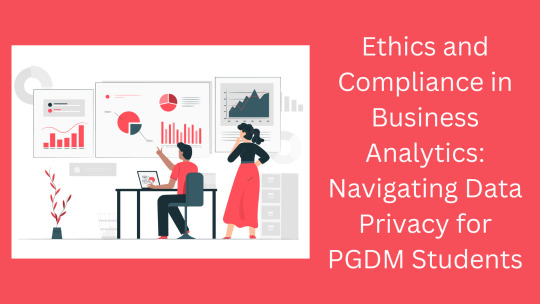
#Business Analytics Course#Ethics in Business Analytics#Data Security in Analytics#Analytics and Consumer Privacy#PGDM in Business Analytics#PGDM Data Privacy Education#Data Minimization in Analytics#Business Analytics Management
1 note
·
View note
Text
Abathur

At Abathur, we believe technology should empower, not complicate.
Our mission is to provide seamless, scalable, and secure solutions for businesses of all sizes. With a team of experts specializing in various tech domains, we ensure our clients stay ahead in an ever-evolving digital landscape.
Why Choose Us? Expert-Led Innovation – Our team is built on experience and expertise. Security First Approach – Cybersecurity is embedded in all our solutions. Scalable & Future-Proof – We design solutions that grow with you. Client-Centric Focus – Your success is our priority.
#Software Development#Web Development#Mobile App Development#API Integration#Artificial Intelligence#Machine Learning#Predictive Analytics#AI Automation#NLP#Data Analytics#Business Intelligence#Big Data#Cybersecurity#Risk Management#Penetration Testing#Cloud Security#Network Security#Compliance#Networking#IT Support#Cloud Management#AWS#Azure#DevOps#Server Management#Digital Marketing#SEO#Social Media Marketing#Paid Ads#Content Marketing
2 notes
·
View notes
Text
French initiative for responsible AI leaders - AI News
New Post has been published on https://thedigitalinsider.com/french-initiative-for-responsible-ai-leaders-ai-news/
French initiative for responsible AI leaders - AI News
ESSEC Business School and Accenture have announced the launch of a new initiative, ‘AI for Responsible Leadership,’ which marks the 10th anniversary of the establishment of the role of Chair at ESSEC, titled the ESSEC Accenture Strategic Business Analytics Chair.
The initiative aims to encourage the use of artificial intelligence by leaders in ways that are responsible and ethical, and that lead to high levels of professional performance. It aims to provide current and future leaders with the skills they require when faced with challenges in the future; economic, environmental, or social.
Several organisations support the initiative, including institutions, businesses, and specialised groups, including ESSEC Metalab for Data, Technology & Society, and Accenture Research.
Executive Director of the ESSEC Metalab, Abdelmounaim Derraz, spoke of the collaboration, saying, “Technical subjects are continuing to shake up business schools, and AI has opened up opportunities for collaboration between partner companies, researchers, and other members of the ecosystem (students, think tanks, associations, [and] public service).”
ESSEC and Accenture aim to integrate perspectives from multiple fields of expertise, an approach that is a result of experimentation in the decade the Chair has existed.
The elements of the initiative include workshops and talks designed to promote the exchange of knowledge and methods. It will also include a ‘barometer’ to help track AI’s implementation and overall impact on responsible leadership.
The initiative will engage with a network of institutions and academic publications, and an annual Grand Prix will recognise projects that focus on and explore the subject of AI and leadership.
Fabrice Marque, founder of the initiative and the current ESSEC Accenture Strategics Business Analytics Chair, said, “For years, we have explored the potential of using data and artificial intelligence in organisations. The synergies we have developed with our partners (Accenture, Accor, Dataiku, Engie, Eurofins, MSD, Orange) allowed us to evaluate and test innovative solutions before deploying them.
“With this initiative, we’re taking a major step: bringing together an engaged ecosystem to sustainably transform how leaders think, decide, and act in the face of tomorrow’s challenges. Our ambition is clear: to make AI a lever for performance, innovation and responsibility for […] leaders.”
Managing Director at Accenture and sponsor of the ESSEC/Accenture Chair and initiative, Aurélien Bouriot, said, “The ecosystem will benefit from the resources that Accenture puts at its disposal, and will also benefit our employees who participate.”
Laetitia Cailleteau, Managing Director at Accenture and leader of Responsible AI & Generative AI for Europe, highlighted the importance of future leaders understanding all aspects of AI.
“AI is a pillar of the ongoing industrial transformation. Tomorrow’s leaders must understand the technical, ethical, and human aspects and risks – and know how to manage them. In this way, they will be able to maximise value creation and generate a positive impact for the organisation, its stakeholders and society as a whole.”
Image credit: Wikimedia Commons
See also: Microsoft and OpenAI probe alleged data theft by DeepSeek
Want to learn more about AI and big data from industry leaders? Check out AI & Big Data Expo taking place in Amsterdam, California, and London. The comprehensive event is co-located with other leading events including Intelligent Automation Conference, BlockX, Digital Transformation Week, and Cyber Security & Cloud Expo.
Explore other upcoming enterprise technology events and webinars powered by TechForge here.
#accenture#ai#ai & big data expo#ai news#amp#Analytics#anniversary#approach#artificial#Artificial Intelligence#automation#Big Data#Business#business analytics#california#Cloud#Collaboration#Companies#comprehensive#conference#cyber#cyber security#data#data theft#deepseek#deploying#Digital Transformation#economic#education#employees
3 notes
·
View notes
Text
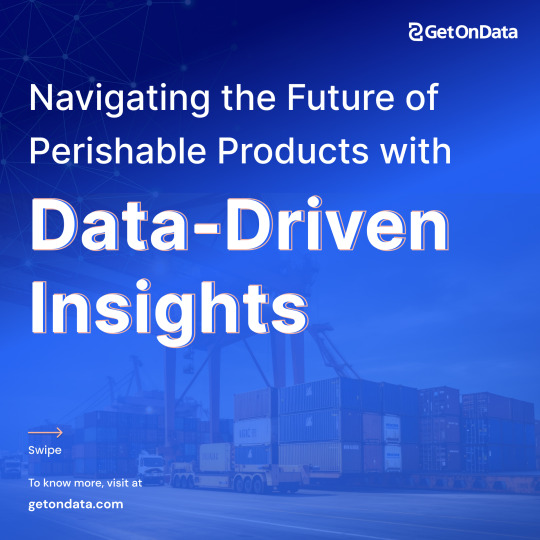
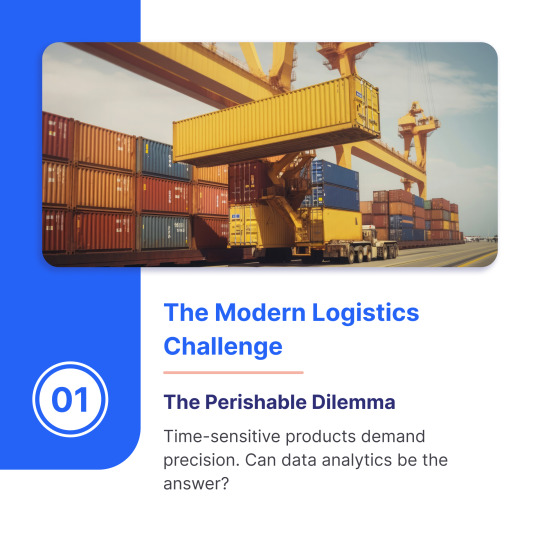
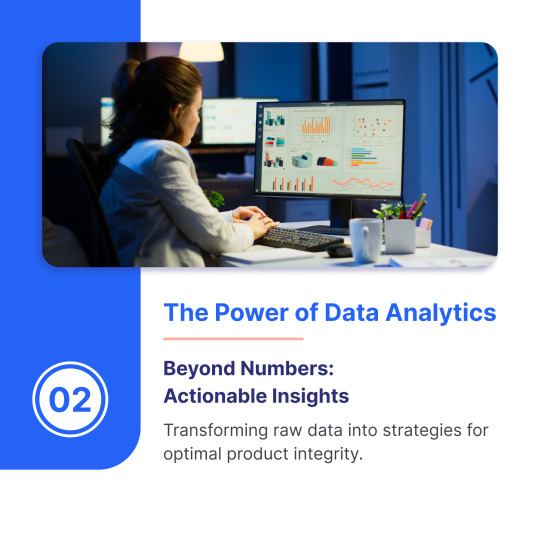
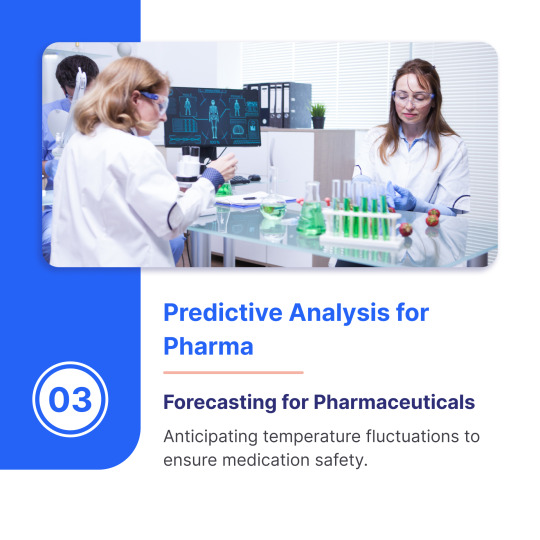
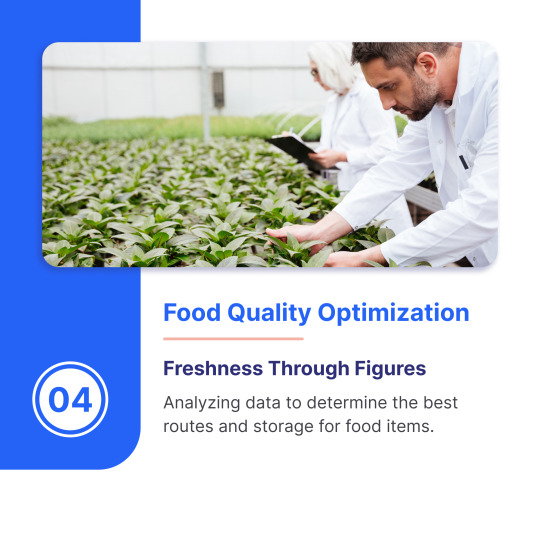
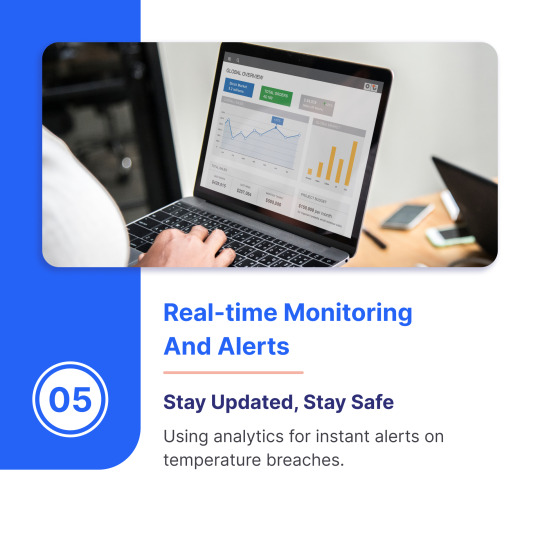
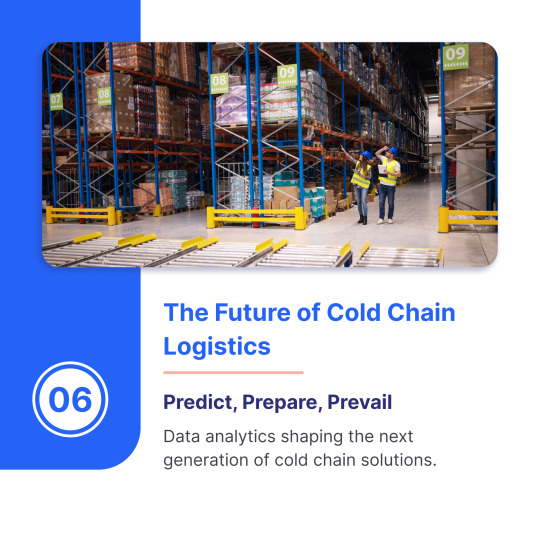
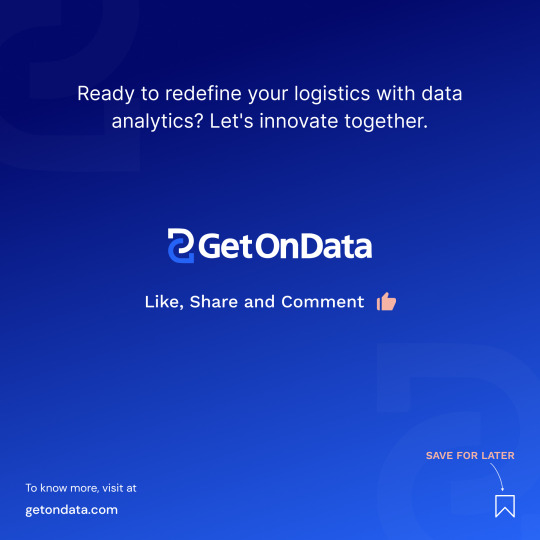
Dive into the future of perishable products with us! Discover how data-driven insights are shaping the way we handle, store, and consume our fresh goods. Let's embrace a smarter, sustainable future together.
#preishable#product#data driven#logistics#data analytics#data#scm#supplychain#demand forecasting#inventorymanagement#food#food security#sustainability#getondata
2 notes
·
View notes
Text
Top Certifications That Can Land You a Job in Tech
Published by Prism HRC – Leading IT Recruitment Agency in Mumbai
Breaking into the tech industry doesn’t always require a degree. With the rise of online learning and skill-based hiring, certifications have become the new ticket into some of the highest-paying and most in-demand jobs. Whether you're switching careers or upskilling to stay ahead, the right certification can boost your credibility and fast-track your job search.
Why Certifications Matter in Tech
Tech employers today are less focused on your college background and more interested in what you can actually do. Certifications show you're committed, skilled, and up-to-date with industry trends a huge plus in a fast-moving field like IT.
Let’s explore the top certifications in 2025 that are actually helping people land real tech jobs.

1. Google IT Support Professional Certificate
Perfect for: Beginners starting in tech or IT support This beginner-friendly course, offered through Coursera, teaches you everything from troubleshooting to networking. It’s backed by Google and respected across the industry.
Tip: It’s also a great way to pivot into other IT roles, including cybersecurity and network administration.
2. AWS Certified Solutions Architect – Associate
Perfect for: Cloud engineers, DevOps aspirants With cloud computing continuing to explode in 2025, AWS skills are hotter than ever. This cert proves you know how to design secure, scalable systems on the world’s most popular cloud platform.
Real Edge: Many employers prioritize candidates with AWS experience even over degree holders.
3. Microsoft Certified: Azure Fundamentals
Perfect for: Beginners interested in Microsoft cloud tools Azure is a close second to AWS in the cloud market. If you’re looking for a job at a company that uses Microsoft services, this foundational cert gives you a leg up.
4. CompTIA Security+
Perfect for: Cybersecurity beginners If you're aiming for a job in cybersecurity, this is often the first certification employers look for. It covers basic network security, risk management, and compliance.
Why it matters: As cyber threats grow, demand for cybersecurity professionals is rising rapidly.
5. Google Data Analytics Professional Certificate
Perfect for: Aspiring data analysts This course teaches data analysis, spreadsheets, SQL, Tableau, and more. It’s beginner-friendly and widely accepted by tech companies looking for entry-level analysts.
Industry Insight: Data skills are now essential across tech, not just for analysts, but for marketers, product managers, and more.
6. Certified ScrumMaster (CSM)
Perfect for: Project managers, product managers, team leads Tech teams often use Agile frameworks like Scrum. This certification helps you break into roles where communication, leadership, and sprint planning are key.
7. Cisco Certified Network Associate (CCNA)
Perfect for: Network engineers, IT support, and infrastructure roles If you’re into hardware, routers, switches, and network troubleshooting, this foundational cert is gold.
Why it helps: Many entry-level IT jobs prefer CCNA holders over generalists.

8. Meta (Facebook) Front-End Developer Certificate
Perfect for: Front-end developers and web designers This cert teaches HTML, CSS, React, and design systems. It’s hands-on and offered via Coursera in partnership with Meta.
The bonus? You also get portfolio projects to show in interviews.
How to Choose the Right Certification
Match it to your career goal – Don't do a cert just because it’s popular. Focus on the role you want.
Check job listings – Look at what certifications are frequently mentioned.
Time vs Value – Some certs take weeks, others months. Make sure the ROI is worth it.
- Based in Gorai-2, Borivali West, Mumbai - www.prismhrc.com - Instagram: @jobssimplified - LinkedIn: Prism HRC
#Tech Certifications#IT Jobs#Top Certifications 2025#Cloud Computing#Cybersecurity#Data Analytics#AWS Certification#Microsoft Azure#CompTIA Security+#Prism HRC#IT Recruitment#Mumbai IT#Skill-Based Hiring#Future of Tech#Mumbai IT Jobs#Google IT Support#Google Data Analytics
0 notes
Text
Tyler Technologies: Payment Service, Credit Card Charge Inquiry
Have you Inquire about a payment service charge from your credit or debit card statement. Manage payments and accept various card types using our technology. Noticed a mysterious charge from Tyler Technologies on your credit card statement? Don’t worry—you’re not alone. Many people spot this name and wonder what it’s for. This guide breaks down what Tyler Technologies is, why they might appear on…
#agency payments#agency verification#automated billing#billing management#consumer protection#court fines#court systems#credit card charge#customer service#data analytics#data protection#digital payments#dispute charges#electronic payments#financial alerts#financial institution#financial security#fraud prevention#fraud reporting#government fees#government services#identity theft#licenses#mobile payments#online payments#payment confirmations#payment disputes#payment methods#payment platform#payment portals
0 notes
Text
Beyond the Buzz: How IoT Redefines Business Operations

Moving from Hype to Reality
IoT has moved from being a futuristic idea to a practical solution that businesses use daily to improve operations and achieve sustainable growth. Though much of the discussion around IoT is about its potential, the real value that it presents is in how companies can use the technology to solve real-world problems.
Today, IoT is no longer a buzzword; it’s a necessity for any business looking to remain competitive and agile in a dynamic global environment. With its power to integrate devices, data, and processes, IoT helps businesses achieve efficiencies, improve customer satisfaction, and create new revenue streams. In this blog post, we explore how IoT is changing business operations across industries and what companies need to do to maximize its potential.
How Tudip Technologies Redefines IoT Solutions
Tudip Technologies empowers businesses with IoT solutions that tackle complex operational challenges and drive measurable outcomes.
Our Specialized Approach:
Edge Computing Integration: Enabling faster data processing closer to devices for real-time responsiveness.
IoT Ecosystem Design: Creating scalable ecosystems that adapt to changing business needs.
Sustainability-Focused Solutions: Tailoring IoT frameworks that align with environmental goals.
Example: Tudip partnered with a logistics provider to implement IoT-powered edge analytics, reducing data processing times by 60% and improving delivery accuracy across global operations.
Key Takeaways: Turning IoT Into Operational Strength
Invest in Scalable Solutions: Ensure your IoT systems can grow alongside your business needs.
Prioritize Security: Robust cybersecurity measures arToday, IoT is no longer a buzzword; it’s a necessity for any business looking to remain competitive and agile in a dynamic global environment. With its power to integrate devices, data, and processes, IoT helps businesses achieve efficiencies, improve customer satisfaction, and create new revenue streams. In this blog post, we explore how IoT is changing business operations across industries and what companies need to do to maximize its potential.
Redefining Operational Efficiency with IoT
1. Predictive Analytics: Smarter Urban Operations with IoT
IoT is revolutionizing energy management by integrating renewable energy sources into business operations. Smart systems analyze usage patterns and adjust power drawn from solar, wind, or traditional grids in real time.
Optimized Renewable Usage: IoT ensures renewable energy is used efficiently by monitoring supply-demand gaps.
Grid Stability: Balances energy loads to prevent outages during peak hours.
Sustainability Goals: Helps businesses achieve net-zero emissions by prioritizing clean energy consumption.
Example: A technology campus integrated IoT in optimizing its solar energy consumption and reduced dependence on traditional grids by 40%, with a significant reduction in operational costs
2. Energy Management: Advancing Renewable Solutions
Predictive analytics powered by IoT is transforming urban infrastructure. Cities can now monitor critical assets like bridges, roads, and utilities in real time, ensuring timely maintenance and preventing costly failures.
Public Safety: Early detection of infrastructure stress minimizes risks to citizens.
Cost Efficiency: Avoiding large-scale repairs reduces budget overruns for municipalities.
Sustainability: Proactive maintenance extends the lifespan of assets, reducing waste.
3. Automation Excellence: Better Disaster Response Logistics
IoT-driven automation is transforming how disaster response occurs—getting aid to where it is needed, faster and more efficiently.
Real-Time Inventory Management: Monitors relief inventory and ensures its proper distribution to areas of greatest need.
Smart Transportation: Optimizes routes for rescue and supply vehicles during crises.
Collaboration Across Agencies: IoT systems enable seamless communication between response teams.
Example:In a recent hurricane, one global aid organization leveraged IoT-connected drones to survey damage and automate the delivery of supplies, resulting in a 50% faster response time.
Overcoming Common IoT Challenges
1. Integration of IoT with Existing Systems
One of the biggest hurdles businesses face is integrating IoT solutions with legacy systems. Compatibility issues can hinder seamless data exchange and functionality. Solution: Use a flexible IoT platform with built-in interoperability; make sure it provides APIs for smooth integration. Careful planning and phased implementation may also reduce disruptions to a minimum.
2. Data Security and Privacy
IoT ecosystems are all about continuous data gathering and transmission, which increases exposure to cyber threats. The security of sensitive information is the foundation of trust with stakeholders.
Solution: Implement robust encryption protocols, regularly update security measures, and educate employees on cybersecurity best practices.
3. Adapting to Rapid Technological Changes
The rapid rate of innovation in IoT can make it challenging for businesses to adapt to new developments and keep their systems current. Solution: Collaborate with technology providers that offer scalable solutions and ongoing support to adapt to emerging trends without overhauling existing systems.
How IoT Drives Operational Transformation
1. Enhancing Decision-Making with Real-Time Insights
IoT provides companies with real-time data that enables informed decision-making. Whether it is revising supply chain strategies or optimizing production schedules, IoT ensures that companies can act quickly and confidently.
Dynamic Adaptability: Businesses can change their strategies according to up-to-date information and stay responsive to market demand.
Improved Collaboration: IoT systems enable better communication across departments, enabling coordinated efforts.
2. Creating Value Through Customization
IoT’s ability to collect granular data allows businesses to tailor their offerings and services to meet specific customer needs. Personalization not only enhances user experience but also builds stronger customer relationships.
e non-negotiable in today’s interconnected world.
Focus on Outcomes: Use IoT to achieve specific goals, whether it’s reducing costs, enhancing customer satisfaction, or achieving sustainability targets.
Conclusion: Moving Beyond the Buzz
IoT has evolved into an indispensable solution, reshaping how businesses optimize operations and achieve sustainable growth. By addressing real-world challenges and delivering actionable insights, IoT enables companies to stay competitive and adaptive.
To fully realize the benefits of IoT, businesses must focus on integrating flexible solutions, safeguarding data, and aligning technology with strategic objectives. With the right approach, IoT becomes more than a technological innovation—it becomes a cornerstone of operational excellence and sustainable growth.
Click the link below to learn more about the blog Beyond the Buzz: How IoT Redefines Business Operations
https://tudip.com/blog-post/beyond-the-buzz-how-iot-redefines-business-operations/
#Tudip#IoT#Internet of Things#business operations#predictive analytics#automation#real-time data#edge computing#smart infrastructure#energy management#renewable energy#sustainability#operational efficiency#cybersecurity#data security#interoperability#digital transformation#scalability#AI-driven insights#machine learning#supply chain optimization#disaster response#smart cities#industrial IoT#connected devices#enterprise IoT#cloud computing#IoT platforms#remote monitoring#predictive maintenance
0 notes
Text
Automate, Optimize, and Succeed AI in Call Centers

Introduction
The call center industry has undergone a significant transformation with the integration of artificial intelligence (AI). Businesses worldwide are adopting AI-powered call center solutions to enhance customer service, improve efficiency, and reduce operational costs. AI-driven automation helps optimize workflows and ensures superior customer experiences. This article explores how AI is revolutionizing call centers, focusing on automation, optimization, and overall business success.
The Rise of AI in Call Centers
AI technology is reshaping the traditional call center model by enabling automated customer interactions, predictive analytics, and enhanced customer service strategies. Key advancements such as Natural Language Processing (NLP), machine learning, and sentiment analysis have led to the creation of intelligent virtual assistants and chatbots that streamline communication between businesses and customers.
Key Benefits of AI in Call Centers
Automation of Repetitive Tasks
AI-driven chatbots and virtual assistants handle routine customer inquiries, freeing up human agents to focus on more complex issues.
AI automates call routing, ensuring customers reach the right agent or department quickly.
Improved Customer Experience
AI-powered systems provide personalized responses based on customer history and preferences.
AI reduces wait times and improves first-call resolution rates, leading to higher customer satisfaction.
Optimized Workforce Management
AI-based analytics predict call volumes and optimize staffing schedules to prevent overstaffing or understaffing.
AI assists in real-time monitoring and coaching of agents, improving overall productivity.
Enhanced Data Analysis and Insights
AI tools analyze customer interactions to identify trends, allowing businesses to improve services and make data-driven decisions.
Sentiment analysis helps understand customer emotions and tailor responses accordingly.
Cost Efficiency and Scalability
AI reduces the need for large call center teams, cutting operational costs.
Businesses can scale AI-powered solutions effortlessly without hiring additional staff.
AI-Powered Call Center Technologies
Chatbots and Virtual Assistants
These AI-driven tools handle basic inquiries, appointment scheduling, FAQs, and troubleshooting.
They operate 24/7, ensuring customers receive support even outside business hours.
Speech Recognition and NLP
NLP enables AI to understand and respond to human language naturally.
Speech recognition tools convert spoken words into text, enhancing agent productivity and improving accessibility.
Sentiment Analysis
AI detects customer emotions in real time, helping agents adjust their approach accordingly.
Businesses can use sentiment analysis to track customer satisfaction and identify areas for improvement.
Predictive Analytics and Call Routing
AI anticipates customer needs based on past interactions, directing them to the most suitable agent.
Predictive analytics help businesses forecast trends and plan proactive customer engagement strategies.
AI-Powered Quality Monitoring
AI analyzes call recordings and agent interactions to assess performance and compliance.
Businesses can provide data-driven training to improve agent efficiency and customer service.
Challenges and Considerations in AI Implementation
While AI offers numerous benefits, businesses must address several challenges to ensure successful implementation:
Data Privacy and Security
AI systems process vast amounts of customer data, making security a top priority.
Businesses must comply with regulations such as GDPR and CCPA to protect customer information.
Human Touch vs. Automation
Over-reliance on AI can make interactions feel impersonal.
A hybrid approach, where AI supports human agents rather than replacing them, ensures a balance between efficiency and empathy.
Implementation Costs
AI integration requires an initial investment in technology and training.
However, long-term benefits such as cost savings and increased productivity outweigh the initial expenses.
Continuous Learning and Improvement
AI models require regular updates and training to adapt to changing customer needs and market trends.
Businesses must monitor AI performance and refine algorithms to maintain efficiency.
Future of AI in Call Centers
The future of AI in call centers is promising, with continued advancements in automation and machine learning. Here are some trends to watch for:
AI-Driven Omnichannel Support
AI will integrate seamlessly across multiple communication channels, including voice, chat, email, and social media.
Hyper-Personalization
AI will use real-time data to deliver highly personalized customer interactions, improving engagement and satisfaction.
Autonomous Call Centers
AI-powered solutions may lead to fully automated call centers with minimal human intervention.
Enhanced AI and Human Collaboration
AI will complement human agents by providing real-time insights and recommendations, improving decision-making and service quality.
Conclusion
AI is transforming call centers by automating processes, optimizing operations, and driving business success. Companies that embrace AI-powered solutions can enhance customer service, increase efficiency, and gain a competitive edge in the market. However, successful implementation requires balancing automation with the human touch to maintain meaningful customer relationships. By continuously refining AI strategies, businesses can unlock new opportunities for growth and innovation in the call center industry.
#AI in call centers#Call center automation#AI-powered customer service#Virtual assistants in call centers#Chatbots for customer support#Natural Language Processing (NLP)#Sentiment analysis in call centers#Predictive analytics in customer service#AI-driven workforce optimization#Speech recognition in call centers#AI-powered quality monitoring#Customer experience optimization#Data analysis in call centers#Call center efficiency#AI and human collaboration#Future of AI in call centers#AI-driven omnichannel support#Hyper-personalization in customer service#Autonomous call centers#AI security and compliance
0 notes
Text
Kickstart Your Career in IT Audit: Graduate Trainee Positions at BUSE! - March 2025
Are you a recent graduate with a passion for information systems and auditing? Bindura University of Science Education (BUSE) is offering an exciting opportunity for two Graduate Trainees to join their Internal Audit Section as Information Systems Auditors. This is a fantastic chance to gain valuable experience and launch your career in a dynamic and growing field. BUSE is looking for motivated…

View On WordPress
#Bindura Jobs#BUSE#Career Zimbabwe#Cyber Security#Data Analytics#Graduate Trainee#Hot Zimbabwe Jobs#Information Systems#IT Audit#Job Opportunity#Now Hiring#Zimbabwe Jobs
0 notes
Text

The Infrastructure Management System is a comprehensive solution designed to streamline the planning, monitoring, and maintenance of critical infrastructure assets. It offers real-time data analytics, enabling organizations to optimize resource allocation, enhance operational efficiency, and ensure compliance with regulatory standards.
0 notes
Text
AI-Driven Cybersecurity: Protecting Education from Breaches
By Leon Basin | Alumnus, Santa Clara University Leavey School of Business | Bridging Academic Rigor & Real-World Cybersecurity Executive Summary 2025 Education Cyberattack Snapshot In 2025, 56% of U.S. school districts suffered cyber breaches—many stemming from compromised privileged accounts (K12 SIX). With K-12 breach costs averaging $4.45M per incident (IBM), institutions must act…
#AI-Powered Security#Artificial Intelligence (AI)#Behavioral Analytics#Business Strategy#cybersecurity#Cybersecurity in Education#Education Technology (EdTech)#Higher Consciousness#Insider Threats#Just-in-Time Access (JIT)#K-12 Cybersecurity#Regulatory Compliance#Research Data Security#Zero Trust
0 notes
Text
Gartner Predicts 40% of AI Data Breaches Will Arise from Cross-Border GenAI Misuse by 2027
Press Release – STAMFORD, Conn., February 17, 2025 Lack of Consistent Global AI Standards Forces Enterprises to Develop Region-Specific Strategies, Limiting AI Scalability and Benefits By 2027, more than 40% of AI-related data breaches will be caused by the improper use of generative AI (GenAI) across borders, according to Gartner, Inc. The swift adoption of GenAI technologies by end-users…
0 notes
Text
Understanding Data Insights: How Businesses Can Use Data for Growth
In today's digital world, data is everywhere. Every interaction, transaction, and process generates information that can be analyzed to reveal valuable insights. However, the real challenge is using this data effectively to drive informed decision-making, improve efficiency, and predict future trends.

What Are Data Insights?
Data insights refer to the meaningful patterns, trends, and conclusions that businesses derive from analyzing raw data. These insights help organizations understand past performance, optimize current operations, and prepare for future challenges. By leveraging data, companies can make strategic decisions based on facts rather than intuition.
Why Are Data Insights Important?
Data-driven decision-making has become a key factor in business success. Here’s why:
Better Decision-Making – Businesses can use data to evaluate market trends, customer preferences, and operational efficiency.
Enhanced Customer Experience – Understanding customer behavior helps companies tailor products and services to meet specific needs.
Operational Efficiency – Identifying inefficiencies allows organizations to streamline processes and reduce costs.
Risk Management – Analyzing data helps in detecting fraud, assessing financial risks, and improving security.
Competitive Advantage – Companies that leverage data effectively can anticipate market shifts and respond proactively.
Types of Data Analytics
There are several types of analytics, each serving a different purpose:
Descriptive Analytics – Examines historical data to identify trends and patterns. Example: A retail store analyzing sales data to determine seasonal demand.
Diagnostic Analytics – Explains why something happened by finding correlations and causes. Example: A company investigating why customer engagement dropped after a website update.
Predictive Analytics – Uses historical data and statistical models to forecast future outcomes. Example: Predicting customer churn based on past interactions.
Prescriptive Analytics – Recommends the best course of action based on predictive models. Example: An airline optimizing ticket pricing based on demand trends.
Cognitive Analytics – Uses artificial intelligence (AI) and machine learning to interpret complex data and generate human-like insights. Example: A chatbot analyzing user sentiment to improve responses.
How Different Industries Use Data Insights
Data insights are widely used across industries to improve efficiency and drive innovation.
Healthcare : Data insights help predict disease outbreaks and improve patient care by analyzing health patterns and trends. They also play a crucial role in personalized treatment, allowing doctors to tailor medical plans based on a patient's history. Additionally, data-driven approaches accelerate drug development, helping researchers identify effective treatments and potential risks more efficiently.
Retail & E-Commerce : Analyzing customer behavior enables businesses to personalize recommendations, enhancing the shopping experience. Additionally, real-time demand forecasting helps in efficient inventory management, ensuring that products are stocked based on consumer needs.
Finance & Banking : Financial institutions use anomaly detection to identify fraudulent transactions and prevent unauthorized activities. Additionally, analyzing customer spending patterns helps assess credit risk, allowing for better loan and credit approval decisions.
Manufacturing : Predictive maintenance helps prevent equipment failures by analyzing performance data and detecting potential issues early. Additionally, data-driven insights optimize supply chain management and production schedules, ensuring smooth operations and reduced downtime.
Marketing & Advertising : By analyzing consumer data, businesses can create targeted marketing campaigns that resonate with their audience. Additionally, data insights help measure the effectiveness of digital advertising strategies, allowing companies to refine their approach for better engagement and higher returns.
Telecommunications : Predicting potential failures helps improve network reliability by allowing proactive maintenance and reducing downtime. Additionally, analyzing customer feedback enables service providers to enhance quality, address issues efficiently, and improve user satisfaction.
Education : Tracking student performance helps create personalized learning paths, ensuring that each student receives tailored support based on their needs. Additionally, data-driven insights assist in curriculum planning, allowing educators to design more effective teaching strategies and improve overall learning outcomes.
Logistics & Transport : Optimizing delivery routes helps reduce fuel costs by identifying the most efficient paths for transportation. Additionally, predictive analytics enhances fleet management by forecasting vehicle maintenance needs, minimizing downtime, and ensuring smooth operations.
How to Implement Data Insights in a Business
For organizations looking to integrate data analytics, here are key steps to follow:
Define Business Objectives – Identify what you want to achieve with data insights.
Collect Relevant Data – Ensure that you gather high-quality data from various sources.
Choose the Right Tools – Use analytics software and machine learning algorithms to process data efficiently.
Ensure Data Security – Protect sensitive information through encryption and compliance measures.
Interpret Results Accurately – Avoid misinterpreting data by considering multiple perspectives.
Train Employees – Build a data-literate workforce that understands how to use insights effectively.
Continuously Improve – Regularly refine analytics processes to stay updated with new trends.
Data Analytics in Advanced Technologies
Space Technology : AI-driven data analytics enhances satellite imaging, real-time Earth monitoring, and space exploration by processing vast amounts of astronomical data efficiently.
Quantum Computing : Quantum-powered analytics enable faster simulations and predictive modeling, improving data processing for scientific and financial applications.
Large Data Models : AI-driven large data models analyze massive datasets, extracting valuable insights for businesses, healthcare, and research.
Research & Analytics (R&A) Services : AI enhances R&A services by automating data collection, trend analysis, and decision-making for industries like finance and healthcare.
Big Social Media Houses : Social media platforms use AI analytics to track user behavior, detect trends, personalize content, and combat misinformation in real-time.
The Future of Data Analytics
The field of data analytics is evolving rapidly with advancements in artificial intelligence, cloud computing, and big data technologies. Businesses are moving towards automated analytics systems that require minimal human intervention. In the coming years, expect to see:
AI-powered decision-making – Machines making real-time business decisions with minimal human input.
Edge computing – Faster data processing by analyzing information closer to the source.
Ethical data practices – Increased focus on privacy, transparency, and responsible AI usage.
Data insights have transformed how businesses operate, enabling smarter decision-making and improved efficiency. Whether in healthcare, finance, or marketing, data analytics services continue to shape the future of industries. Companies that embrace a data-driven culture will be better positioned to innovate and grow in a highly competitive market.
By understanding and applying data insights, businesses can navigate challenges, seize opportunities, and remain ahead in an increasingly digital world.
FAQs:
What are data insights?Data insights are patterns and trends derived from analyzing raw data to help businesses make informed decisions.
Why are data insights important?They improve decision-making, enhance customer experience, optimize operations, and provide a competitive advantage.
How do businesses use data insights?Companies use them for customer behavior analysis, fraud detection, predictive maintenance, targeted marketing, and process optimization.
What tools are used for data analytics?Common tools include Python, R, SQL, Tableau, Power BI, and Google Analytics.
What is the future of data analytics?AI-powered automation, edge computing, and ethical data practices will shape the future of analytics.
#technology#software#data security#data science#ai#data analytics#databricks#data#big data#data warehouse
0 notes
Text
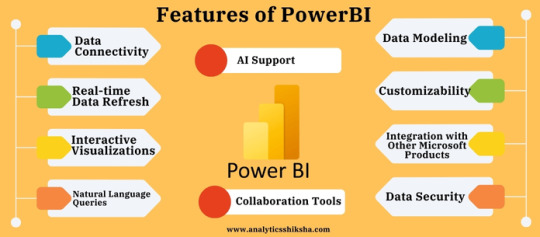
Power BI has many features to help with analyzing and visualising data in the format chosen by the user. Here are some of the key features of Power BI:
Data Connectivity: Using Power BI it is possible to connect to a wide range of data sources, including cloud services and local databases.
Real-time Data Refresh: It provides features for refreshing the data in real time.
Interactive Visualizations: The software allows users to create and share interactive and immersive reports and dashboards with multiple visualizations.
Natural Language Queries: Another capability being offered to business users is the natural language queries through which users can ask questions and get responses in form of charts and graphs.
Data Modeling: It has comprehensive data modeling capabilities that support the handling of large amounts of data and provides tools to change the data when necessary.
Customizability: Power BI provides users with a flexible option to design the layout of the dashboard or a report according to the organization needs.
Integration with Other Microsoft Products: It is well aligned with other Microsoft business apps like Microsoft Azure and Office 365 for the interoperation of data.
Data Security: Possesses strong security measures at various tiers, including the option to regulate data’s accessibility and use.
AI Support: Azure AI is integrated with Power BI to provide users with direction within data to make better decisions.
Collaboration Tools: Provides options for sharing and publishing of dashboards and reports through the Power BI service. Learn More:-https://www.analyticsshiksha.com/blog/what-is-power-bi-data-analysis-features-uses-benefits
#Natural Language Queries#Collaboration Tools#Data Security:#Microsoft Products#Data Connectivity:#Power BI#data analytics courses in delhi#data analytics courses
0 notes
Text
Pushing Your Business’ Data Operations to the Forefront of Innovation and Data-Driven Value.
Sanjay Kumar Mohindroo Sanjay Kumar Mohindroo. skm.stayingalive.in Discover how Chief Data Officers can drive digital transformation, elevate data operations, and unlock unparalleled data-driven value. The Evolving Role of the Chief Data Officer (CDO) In today’s fast-paced digital landscape, the Chief Data Officer (CDO) plays a pivotal role in steering organizations toward innovation and…
#AI#Big Data#Business Transformation#Chief Data Officer#Cloud Computing#Data Analytics#Data Culture#data governance#Data Security#data strategy#Data-Driven Value#digital transformation#Innovation Leadership#News#Performance Metrics#Sanjay Kumar Mohindroo
0 notes
Text
Innefu Lab: Leading AI Solutions for Cybersecurity and Fraud Prevention

Innefu Lab is revolutionizing the world of cybersecurity and predictive intelligence with its advanced AI-driven technologies. As a 100% "Make-In-India" venture, Innefu Lab provides cutting-edge solutions in Information Security and Data Analytics to safeguard businesses and government organizations across India and the Middle East. Trusted by over 100 clients, Innefu Lab is at the forefront of AI and machine learning-based analytics, offering powerful technology that delivers smarter and safer environments.
What is Innefu Lab?
Innefu Lab is an AI-driven research and development company specializing in next-generation cybersecurity solutions. With a focus on data protection, fraud prevention, and machine learning, Innefu Lab is helping organizations stay ahead of evolving cyber threats. Their solutions, which include biometric and facial recognition software, are used across sectors like banking, law enforcement, and surveillance.
AI in Image and Video Analytics: Enhancing Security and Fraud Prevention
Innefu Lab’s AI-Vision technology is leading the charge in image and video analytics. AI-powered facial recognition and video analysis have become essential tools for fraud prevention, criminal identification, and security. Innefu Lab’s solutions analyze images and videos in real-time, providing quick and accurate results.
How AI Facial Recognition Works
Innefu Lab’s facial recognition technology converts images into greyscale to enhance face detection. The algorithm extracts unique facial features like jawline shape, eye spacing, and facial proportions, then matches them with a database to verify identities. This technology is widely used in preventing identity theft, fraud detection, and law enforcement.
AI Video Analytics
Video analytics breaks down video footage into individual frames, analyzing them as independent images. This technology is crucial for applications like traffic management, event security, and real-time surveillance, enabling better monitoring and faster response times.
Real-World Applications of Innefu Lab’s AI Technology
Innefu Lab’s AI-Vision software is already making a tangible impact in various sectors, from banking to law enforcement. The technology is specifically designed to combat identity theft, detect fraud, and aid in criminal investigations.
AI for Banking Fraud Prevention
One of the most prevalent forms of fraud is identity theft. Fraudsters often use fake IDs to access banking services. Innefu Lab’s facial recognition software helps banks detect such fraudulent activities by comparing images with existing databases to identify potential fraudsters. Leading private banks in India use Innefu Lab’s technology to strengthen KYC (Know Your Customer) processes and ensure secure transactions.
AI in Law Enforcement
In law enforcement, Innefu Lab’s software plays a crucial role in solving crimes and identifying criminals. In one case, AI-Vision helped locate over 3,000 missing children in just four days, earning praise from the National Commission for Protection of Child Rights. In 2020, Delhi Police used the software to identify rioters during the North East Delhi riots, which was later mentioned in the Home Minister’s Parliamentary speech.
Other Applications
Banking: AI-Vision enhances ATM security by verifying identities and preventing card skimming or unauthorized transactions.
Airports: AI-Vision streamlines the passenger boarding process, reducing the need for manual identity verification and enhancing security.
Retail: Retailers are integrating facial recognition into self-service kiosks for a more personalized customer experience, minimizing human intervention.
Event Security: AI-Vision helps improve event security by verifying guest identities in real-time, ensuring smoother and safer entry to events.
Benefits of Innefu Lab's AI Solutions
Faster Fraud Detection: Innefu Lab’s AI-powered systems identify fraudulent activities quickly, preventing potential financial losses.
Real-Time Criminal Identification: AI technology allows law enforcement to identify criminals in real-time, improving response times and public safety.
Improved Customer Experience: With AI-Vision, businesses can offer personalized services to customers while reducing human errors.
Enhanced Security: AI-driven facial recognition ensures a higher level of security in banking, airports, retail, and more.
The Future of AI in Cybersecurity and Predictive Intelligence
As cyber threats become more sophisticated, Innefu Lab is committed to staying ahead of the curve. The company’s AI-powered solutions are not only reactive but also proactive in preventing cybercrime and security breaches. By integrating machine learning, predictive analytics, and real-time identity verification, Innefu Lab is setting new standards in cybersecurity, ensuring a safer and smarter future.
In a world where digital transformation is rapidly advancing, Innefu Lab is paving the way for smarter, safer technology. The company’s innovations in AI and cybersecurity are redefining what it means to protect sensitive data, combat fraud, and safeguard public safety.
Why Choose Innefu Lab?
Innefu Lab’s AI technology is trusted by top organizations across India and the Middle East for its efficiency, accuracy, and reliability. With solutions tailored for various industries, Innefu Lab is revolutionizing the way businesses approach cybersecurity, fraud prevention, and predictive intelligence.
In a fast-evolving digital landscape, Innefu Lab’s commitment to innovation and real-world impact ensures that their clients stay ahead of potential risks, securing their future in an increasingly connected world.
#Innefu Lab#Tarun Wig#tarun wig innefu labs#AI in law enforcement#Real-time surveillance AI#Data analytics for security#Innefu Lab AI#AI cybersecurity solutions#Facial recognition software#Predictive intelligence AI
0 notes